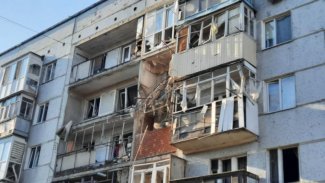Western infantry fighting vehicles for Ukraine. Day 319 of the war

On 6 January, the US Department of Defense presented details of the new US$3.07 billion military aid package for Ukraine which it had announced the day before. US$2.85 billion of this sum was allocated by a decision of the Presidential Drawdown Authority (PDA), and the remaining US$225 million through the Foreign Military Financing (FMF) support programme for allied countries. From the PDA funds, the Ukrainian army will receive 50 M2A2-ODS Bradley infantry fighting vehicles (IFVs) with a stockpile of 500 BGM-71 TOW anti-tank guided missiles (just under 1.5 units of fire per vehicle) and 250,000 25-mm cartridges (5.5 units of fire per vehicle), 100 M113 tracked transporters, 18 155-mm self-propelled howitzers with an equivalent number of ammunition vehicles (most likely М109А6 Paladins with М992A2 FAASVs built on their chassis), 155-mm ammunition (70,000 ordinary, 500 guided and 1200 remote anti-armour mine systems), 36 105-mm towed howitzers (most likely M119s) and 95,000 artillery shells of the same calibre, 10,000 120-mm mortar grenades, around 2000 hand-held anti-tank grenade launchers and 4000 127-mm Zuni unguided air-to-ground missiles, as well as an unknown number of additional GMLRS guided missiles for HIMARS launchers and RIM-7 Sea Sparrow anti-aircraft missiles. These armaments are expected to begin arriving in the country within the next few weeks.
Citing sources in the Pentagon, US media have reported on the launch of a programme to recover stockpiled Cold War-era munitions and possibly upgrade them for later transfer to Ukraine (Politico), and to train Ukrainian service personnel to operate Patriot surface-to-air batteries; this should begin in January and last several months (according to CNN).
On 5 January, German Chancellor Olaf Scholz said in a phone conversation with President Joe Biden that Germany will supply Ukraine with a Marder IFV and a Patriot battery. Berlin can transfer up to 40 Marders from the Bundeswehr or from the manufacturer’s stocks; deliveries of this equipment is expected to be completed in the first quarter of this year. Patriot launchers should also come from the German army’s stocks, but no details of their delivery or training Ukrainian crews have been disclosed. A day later, Der Spiegel reported that the Chancellery is holding talks with countries with stocks of 35-mm ammunition for Gepard self-propelled anti-aircraft cannons. This would allow the transfer of another five such vehicles to Kyiv.
The announcements of the delivery of IFVs from the United States and Germany were accompanied by media reports that the Ukrainian army will receive Leopard-2 tanks, primarily from Poland. Finland is also said to be considering handing over its Leopards to Ukraine, provided a joint decision is made ‘in Europe’ on the matter.
Russian forces have outflanked the town of Soledar, and street fighting is taking place there. The Ukrainian defenders are holding off attacks in the eastern part of Bakhmut, on its southern and north-eastern outskirts, and along the rail line north to Siversk. The Ukrainian command assesses the situation as difficult, and additional units are being directed to reinforce the defence of Bakhmut and Soledar. In the Donetsk oblast, clashes also occurred west of Horlivka and in a wide arc west of Donetsk. The Russians have also made further attempts to attack enemy positions on the border of the Luhansk and Donetsk oblasts (particularly heavy fighting is taking place in an arc west of Kreminna) as well as Kharkiv oblast. Ukrainian forces were also expected to launch counterattacks in the Luhansk oblast and the western part of the Donetsk oblast.
On 5 January, Russian President Vladimir Putin ordered a unilateral ‘cease-fire’ along the entire line of contact from 12am on January 6 until midnight on 7 January; Russian units were ordered to respond with fire only in response to attacks. While in the combat areas the cease-fire was a sham from the beginning, the attackers did indeed halt their bombardment of towns and cities (including Kherson and Nikopol), although they resumed immediately after the declared deadline expired.
The Russian artillery and air force are continuing to shell and bombard the positions and facilities of the Ukrainian forces along the line of contact and in the border areas (mainly in Sumy oblast). Kherson, Nikopol and their surroundings, as well as the coastal areas of the Mykolaiv oblast (primarily Ochakiv) are still under constant fire. On the night of 5–6 January, there were missile strikes on Kramatorsk, and on 7–8 January on Merefa in the Kharkiv oblast; once more on Kramatorsk (seven missiles were reported) and Kostiantynivka in the Donetsk oblast, and on Zaporizhzhia. The following night, missiles attacked Shevchenkovo in the Kharkiv oblast and Kostiantynivka again. Ukrainian artillery fired at the enemy’s logistical facilities in Donetsk, among other places. Acts of sabotage took place in occupied Melitopol (on the Hydromash plant, which has been turned into a Russian military base) and in Belgorod and Kursk oblasts on Russian territory.
On 5 January, the Special Operations Forces of Belarus received new armaments from Russia. The BTR-82A wheeled armoured personnel carriers, as well as specialised vehicles (34 vehicles in total, corresponding to the supply for a battalion), were most likely delivered to the 38th Air Assault Brigade in Brest. In total, the Belarusians have so far received three BTR-82A battalion sets. More subunits of the Russian army are also arriving in the country. Between 6 and 8 January, at least 1400 troops were moved to Vitebsk, and nine helicopters were moved to Belarusian airfields. Between 16 January and 1 February, joint aviation and air defence exercises are to be held on its territory, involving all the airfields and training grounds of the Belarusian Air Force and Air Defence Forces, as well as a Russian aviation component numbering up to 100 aircraft and helicopters. On 6 January, Alyaksandr Lukashenka visited the 230th Obuz-Lesnovsky training ground near Baranovichi (where Russian ground units are stationed), where he was informed that the next stage of coordinating the Belarusian and Russian units had been completed.
The commander of Kyiv’s defence force, General Oleksandr Pavluk, announced on 5 January that a multi-level defence system had been set up near the border with Belarus. The grouping can repel a potential attack thanks to several defence lines located around the capital, of about 1000 kilometres in total; these are supported by minefields and engineering barrages. Methods of artillery shelling and strikes by mobile battle groups on the enemy’s approach routes have also been planned.
Ukraine’s defence minister Oleksiy Reznikov insisted that losses in the frontline units are being replenished, and admitted that soldiers with particular specialties are being sought, but that there is as yet no need to increase mobilisation; however he added that such a decision could be taken at any time. According to Ukrainian military intelligence (HUR), the enemy plans to mobilise another 500,000 troops in the next two months, to take part in offensive operations in the east and south of the country over the spring and summer.
Commentary
- The latest package of US support (granted on August 24) is the largest ever announced; it will amount to US$2.98 billion. The transfer of Western-designed combat vehicles should be considered a breakthrough; until now Ukraine had received only tanks and armoured combat vehicles of Soviet design or based on such (including the Polish Twardy PT-91). Together with the announcements from Berlin (regarding the delivery of the Marder IFV) and Paris (armoured reconnaissance vehicles with 105-mm AMX-10RC cannons), this can be seen as the beginning of the Westernisation of Ukrainian basic land force units. The progressive depletion of post-Soviet armaments in Ukraine and the countries supporting it makes this an indispensable condition for the success of the defenders at the front. However, the supplies pledged so far are too small to alter the military balance of power in favour of Kyiv. It suffices to recall that in mid-December, the Ukrainian army’s commander-in-chief General Valerii Zaluzhnyi reported that it still needed 300 tanks, 600–700 IFVs and 500 howitzers.
- The Western armaments to be delivered are not among the most modern. Only the US Bradley IFV is markedly superior to the in-service BMP-1/BMP-2-family vehicles in terms of its potential; the Ukrainians are receiving the version from three decades ago (M2A2 ODS [Operation Desert Storm] variants). The 50-year-old Marders are on a similar level to the Soviet equivalents, and the French wheeled ‘tanks’, which are not much younger, were constructed with conflicts in Africa in mind. The other armaments which had not previously been transferred to Ukraine (the RIM-7 Sea Sparrow missiles, which are likely to be installed on post-Soviet Buk-M1 launchers, and the Zunis) also date from the Cold War period. The Americans’ intention to use up their old stockpiles first confirms that they are starting a programme to use their stockpiled munitions.
- The new support package means that the largest amount of armaments in each of the categories supplied to the Ukrainian army will come from the US, with the exception of tanks (which the Americans do not plan to supply for now; Poland has so far donated the most tanks). Germany’s donation of IFVs will not change its position in the donor ranking: in terms of the volume of heavy armaments deliveries, it will still remain behind even countries much smaller than it (the Czech Republic, Slovakia and Slovenia).
- The continuation of increased training activity and the systematic strengthening of the joint Russian-Belarusian force grouping signals that the aggressors intend to continue tying up their opponents’ troops on the Belarusian border. Extensive exercises by the Russian air force using Belarusian airfields suggest that it is considering stepping up air attacks against Ukraine. The Ukrainian side is also still reckoning with the possibility that the enemy is developing a ground strike grouping which could threaten the western part of the country and its capital directly. Accordingly, it has been systematically expanding its defensive lines over the last several months; if these are broken, that would require large forces (especially artillery) to be concentrated there, although an attack on them would of itself cause significant losses among the invaders.





